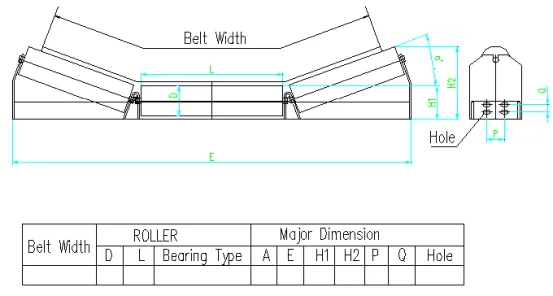 Afrikaans
Afrikaans  Albanian
Albanian  Amharic
Amharic  Arabic
Arabic  Armenian
Armenian  Azerbaijani
Azerbaijani  Basque
Basque  Belarusian
Belarusian  Bengali
Bengali  Bosnian
Bosnian  Bulgarian
Bulgarian  Catalan
Catalan  Cebuano
Cebuano  Corsican
Corsican  Croatian
Croatian  Czech
Czech  Danish
Danish  Dutch
Dutch  English
English  Esperanto
Esperanto  Estonian
Estonian  Finnish
Finnish  French
French  Frisian
Frisian  Galician
Galician  Georgian
Georgian  German
German  Greek
Greek  Gujarati
Gujarati  Haitian Creole
Haitian Creole  hausa
hausa  hawaiian
hawaiian  Hebrew
Hebrew  Hindi
Hindi  Miao
Miao  Hungarian
Hungarian  Icelandic
Icelandic  igbo
igbo  Indonesian
Indonesian  irish
irish  Italian
Italian  Japanese
Japanese  Javanese
Javanese  Kannada
Kannada  kazakh
kazakh  Khmer
Khmer  Rwandese
Rwandese  Korean
Korean  Kurdish
Kurdish  Kyrgyz
Kyrgyz  Lao
Lao  Latin
Latin  Latvian
Latvian  Lithuanian
Lithuanian  Luxembourgish
Luxembourgish  Macedonian
Macedonian  Malgashi
Malgashi  Malay
Malay  Malayalam
Malayalam  Maltese
Maltese  Maori
Maori  Marathi
Marathi  Mongolian
Mongolian  Myanmar
Myanmar  Nepali
Nepali  Norwegian
Norwegian  Norwegian
Norwegian  Occitan
Occitan  Pashto
Pashto  Persian
Persian  Polish
Polish  Portuguese
Portuguese  Punjabi
Punjabi  Romanian
Romanian  Russian
Russian  Samoan
Samoan  Scottish Gaelic
Scottish Gaelic  Serbian
Serbian  Sesotho
Sesotho  Shona
Shona  Sindhi
Sindhi  Sinhala
Sinhala  Slovak
Slovak  Slovenian
Slovenian  Somali
Somali  Spanish
Spanish  Sundanese
Sundanese  Swahili
Swahili  Swedish
Swedish  Tagalog
Tagalog  Tajik
Tajik  Tamil
Tamil  Tatar
Tatar  Telugu
Telugu  Thai
Thai  Turkish
Turkish  Turkmen
Turkmen  Ukrainian
Ukrainian  Urdu
Urdu  Uighur
Uighur  Uzbek
Uzbek  Vietnamese
Vietnamese  Welsh
Welsh  Bantu
Bantu  Yiddish
Yiddish  Yoruba
Yoruba  Zulu
Zulu carrying idler frame
Understanding the Importance of the Carrying Idler Frame in Conveyor Systems
The carrying idler frame is a crucial component in the realm of conveyor systems, playing a pivotal role in the smooth operation and efficiency of material handling. Conveyors are widely used in various industries, including mining, manufacturing, and logistics, to transport bulk materials or products from one location to another. Among the various elements that constitute a conveyor system, the carrying idler frame stands out due to its multifaceted purpose in supporting, guiding, and stabilizing the conveyor belt.
What is a Carrying Idler Frame?
A carrying idler frame consists of a structured array of rollers mounted on a frame that supports the weight of the conveyed material on the belt. The components of the idler frame typically include a series of rollers that are strategically placed at intervals along the conveyor belt. These rollers are responsible for reducing friction as the belt moves, allowing for a smoother and more efficient operation. The stability offered by the carrying idler frame is crucial for ensuring that the conveyor system handles heavy loads without sagging or misalignment.
Functionality and Design
The design of the carrying idler frame is integral to its functionality. It must be robust enough to withstand the stress imposed by heavy loads while maintaining the proper alignment and tension of the conveyor belt. Moreover, the frame must allow for effective drainage of any materials that may accumulate on the belt, mitigating the risk of clogging, which could lead to operational delays.
Typically constructed from materials such as steel or reinforced plastic, carrying idler frames are designed to endure harsh operating conditions commonly found in industrial environments. Variations in the design, such as troughing idlers, flat idlers, and impact idlers, cater to different types of materials and operational requirements. For instance, troughing idlers are designed to hold the belt in a U-shaped configuration, thereby increasing the capacity to transport bulk materials without spillage.
Significance in Operational Efficiency
carrying idler frame

The significance of the carrying idler frame extends beyond its structural role; it also enhances the overall efficiency of conveyor systems. A well-designed idler frame minimizes belt wear and tear by ensuring the belt maintains correct alignment and tension. This factor is crucial, as improper belt alignment can lead to uneven wear, reducing the lifespan of the conveyor belt and increasing maintenance costs.
Furthermore, by reducing friction, the carrying idler frame aids in decreasing energy consumption associated with moving the conveyor belt. In industries where operational costs are paramount, such efficiencies can translate into substantial savings over time. Thus, investing in high-quality carrying idler frames can yield long-term benefits, making it a worthwhile consideration for any operations reliant on conveyor systems.
Maintenance and Best Practices
To maximize the performance of carrying idler frames, regular maintenance is essential. This includes inspecting the bearings of the idlers for wear, ensuring that rollers are clean and free from obstructions, and verifying that the frame is secure and properly aligned. Neglecting maintenance can lead to costly downtimes and repairs, as well as safety hazards due to the malfunctioning of the system.
In addition to maintenance, choosing the right type of carrying idler frame for the specific application cannot be overstated. Operators should consider factors such as the type of materials being transported, environmental conditions, and the overall design of the conveyor system.
Conclusion
The carrying idler frame is a fundamental element of conveyor systems that merits attention from system designers and operators alike. Its role in supporting and stabilizing the conveyor belt, coupled with its impact on operational efficiency, positions it as an indispensable component in material handling processes. By ensuring proper design, maintenance, and selection, industries can enhance conveyor performance, reduce costs, and improve overall productivity. As industries continue to evolve, the importance of robust conveyor systems and their components like the carrying idler frame will undoubtedly remain paramount in achieving operational excellence.
-
Revolutionizing Conveyor Reliability with Advanced Rubber Lagging PulleysNewsJul.22,2025
-
Powering Precision and Durability with Expert Manufacturers of Conveyor ComponentsNewsJul.22,2025
-
Optimizing Conveyor Systems with Advanced Conveyor AccessoriesNewsJul.22,2025
-
Maximize Conveyor Efficiency with Quality Conveyor Idler PulleysNewsJul.22,2025
-
Future-Proof Your Conveyor System with High-Performance Polyurethane RollerNewsJul.22,2025
-
Driving Efficiency Forward with Quality Idlers and RollersNewsJul.22,2025





























